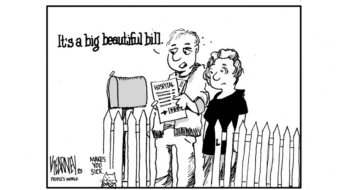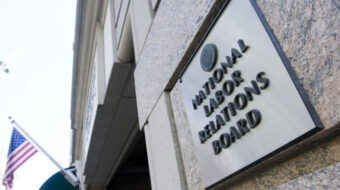A survey of 190 American hospitals compiled by nurses in eight different states shows that hospitals across the nation are not ready for the coming H1N1 (swine flu) pandemic. The findings were released this week by the California Nurses Association/National Nurses Organizing Committee.
Researchers conducted the survey over the past four weeks in hospitals in Arizona, Florida, Illinois, Maine, Minnesota, Nevada, Pennsylvania and Texas.
The RN’s say there are gross inadequacies in safety gear, infection control training, and post-exposure procedures.
At more than one-fourth of the hospitals, nurses cite inadequate isolation of swine flu patients, increasing the risk of infection to others.
Nurses at 15 percent of the hospitals are without access to proper respirator masks, exposing them and their patients to infection. Another problem with the masks is that at 40 percent of the hospitals’ nurses are expected to re-use them. The policy violates Centers for Disease Control guidelines.
The problems cited have resulted in nurses at 18 percent of the hospitals surveyed becoming infected with the virus. A nurse in Sacramento, Calif. has already died after coming down with the flu.
The CNA is demanding that all hospitals adhere to “the highest standards of protection for patients and nurses.”
A major increase in new cases of the H1N1 virus is expected to sweep across the country this fall and winter.
Unscrupulous businesses are already surfacing with their attempts to cash in on the expected increase in cases.
At various locations on the south side of Chicago, for example, “swine flu preparedness kits” are available for purchase by consumers. The kits, in official looking white metal boxes with red crosses painted on them contain batteries, transistor radios, flashlights bandages, aspirin and Tylenol but nothing that medical experts say would be effective against the flu. “At best, a kit like that would help get you through a short power outage,” said a nurse at Cook County Hospital.
Nurses see the lack of preparedness at hospitals themselves, however, as being a problem for the entire surrounding communities.
“Many hospitals will become vectors for infection,” warned Deborah Burger, a nurse who is co-president of CNA. “Inadequate patient protections lead to spreading of the pandemic among other patients, their friends, family, caregivers and the surrounding community. What we’re hearing from around the country is dangerous to patient health and safety, but with smart and clinically appropriate leadership we can fix policies in time for the upcoming pandemic.”
The survey noted several additional problems at the institutions studied.
At 19 percent of the hospitals that did have appropriate N95 respirator masks, all or some of them were not “fitted” to ensure their effectiveness against the virus.
At more than one in five hospitals there were too few masks.
Nurses at less than half the facilities said they have received adequate training in H1N1 issues including identification of infected patients and procedures for caring for them once they are identified.
The CNA proposes a number of measures to combat the problems.
They are calling for strict adherence to infection control procedures including identification and isolation with appropriate ventilation of infected patients.
They want all hospital workers and visitors to be provided with appropriate protection gear including N95 respirator masks for all who enter the isolation room of a confirmed or suspected H1N1 patient.
The CNA insists that any nurse unable to work due to contracting a communicable or infectious disease identified or treated in his or her hospital shall be guaranteed sick leave, immunity from disciplinary action, and eligibility for workers compensation.
The union also seeks a nationwide moratorium on any closures of emergency rooms, layoffs of direct health care personnel, or reductions in the number of hospital beds.
Lastly, they say disposable respirator masks must not be re-used.










